The Studebaker brand began in February 1852 with wagons and carriages and continued through 1966.
Studebaker Car Ad March 26, 1910

This 1910 ad is the first Studebaker ad we could find in The Saturday Evening Post. The Studebaker brothers opened a blacksmith shop in South Bend, Indiana on February 16, 1852. The California Gold Rush proved to be a boom for this wagon business, as was a contract to supply Union army wagons (who knew there were “Studebakers” in the Civil War?). It was a natural transition to the motor coach, if that new-fangled horseless carriage fad can be called natural. From wagons and buggies to classy and classic vehicles with motors, Studebaker history reflects a century of transportation change.
Studebaker Car Ad July 5, 1919

By the time this ad appeared in July of 1919, the five Studebaker brothers had all passed away. Production of vehicles such as this seven-passenger “Big Six” was overseen in part by sons and sons-in-law. Car ads were already appealing to the ladies, as we can see a group of women here about to take the Big Six on an excursion. It was priced at $1,985.
Studebaker Car Ad May 28, 1927
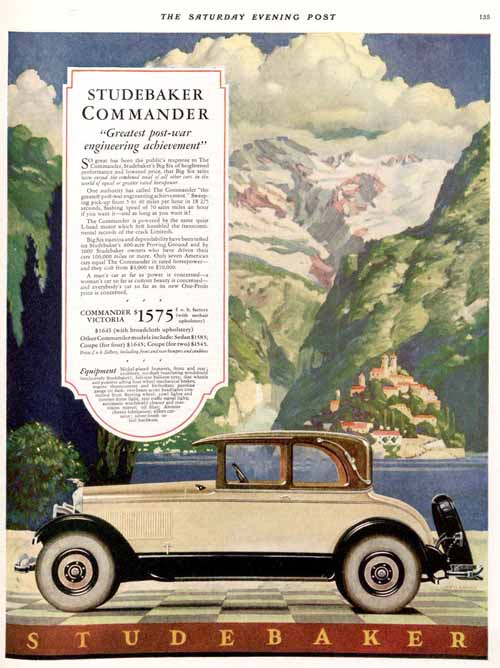
This beautiful 1927 ad is for a Studebaker Commandeer, the “Greatest post-war engineering achievement.” This handsome model boasted nickel-plated bumpers and something called “no-draft ventilating windshield (exclusively Studebaker).” Dig the “full-size balloon tires”. Modern features such gasoline gauge on dash, interior dome light and automatic windshield cleaner show that the horseless carriage had come a long way.
Studebaker Car Ad June 29, 1934
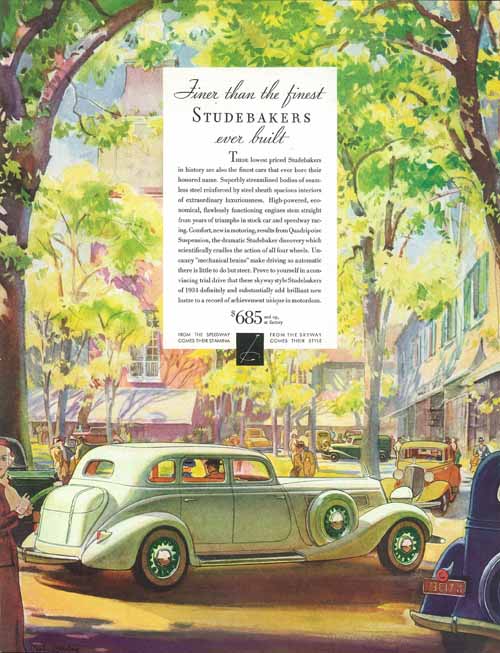
This 1934 ad is a work of art in itself. Notice the price has declined dramatically – starting at $685. These “lowest priced Studebakers in history” are the result of the economic Depression and refined manufacturing methods. No more building one car at a time. Even the lowest-priced cars were a tough sell in that economy, but by 1933 Studebaker was back in the black and expanding dealerships.
Studebaker Car Ad October 10, 1936

The low-price years continue with this 1937 model. Boasting the “winged victory radiator grilles” and capacious trunks, these classics start at $665.
Studebaker Truck Ad August 10, 1946
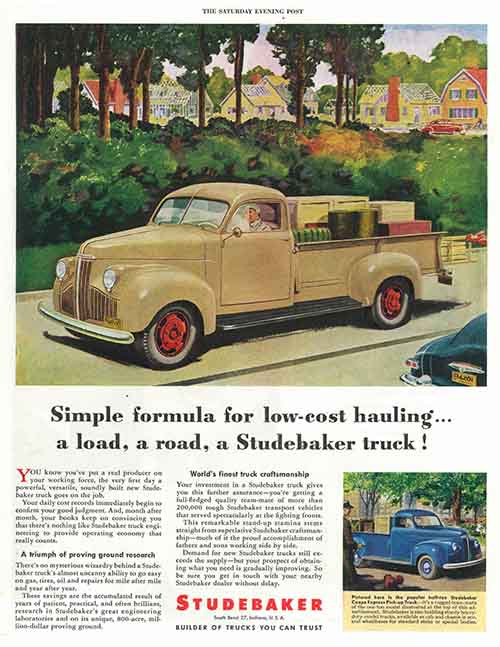
Studebaker didn’t only produce cars, but that workingman’s friend, the truck. And the vehicles were not only built in South Bend (where there remains a Studebaker museum today), but in plants in Detroit and Canada
Studebaker CG Car Ad September 1948
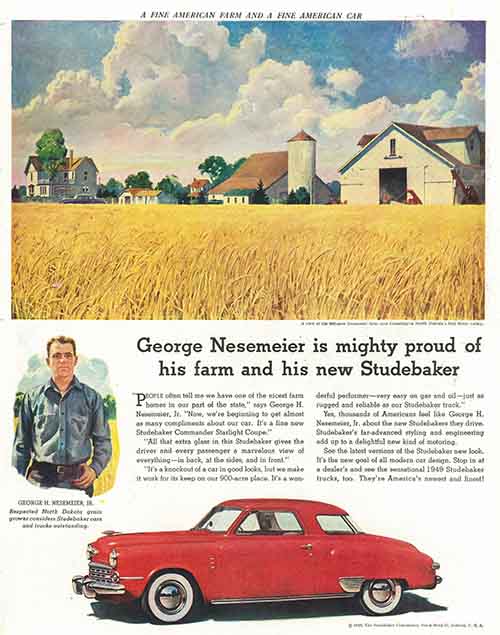
We found this bright red “Studebaker Commander Starlight Coupe” in the September 1948 issue of Country Gentleman magazine, a sister publication at the time. This “respected North Dakota grain grower” is showing off his 900-acre farm and declaring he is “mighty proud of his farm and his new Studebaker”.
Alas, by the 1950’s, Studebaker’s star was fading, in spite of merging with the more financially sound Packard. But stay tuned, folks, we have some beautiful Packard ads to show you next time.
In the November 1962 Post writer Arthur W. Baum relates that Studebaker “now makes fewer automobiles than an other of the five major U.S. firms, little more than one in every 100 of the industry’s total of 6,000,000. In the last half-dozen years Studebaker has enjoyed only one substantially profitable year. The company concedes that about one-quarter of the country has no Studebaker dealers.” The slick new “Avanti” notwithstanding, they were not making the dent in a market dominated by the Chevrolet Corvette and Ford Thunderbird. By the end of 1963, the South Bend plant, which had begun 111 years previously as a blacksmith shop forging metal parts for wagons. In 1966, the remaining plant in Ontario closed.
Become a Saturday Evening Post member and enjoy unlimited access. Subscribe now


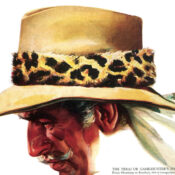

Comments
My first car was a 64 Studebaker utility truck – called it “the turtle” cause that was just about top speed. But, gawd, I loved that yellow beast!